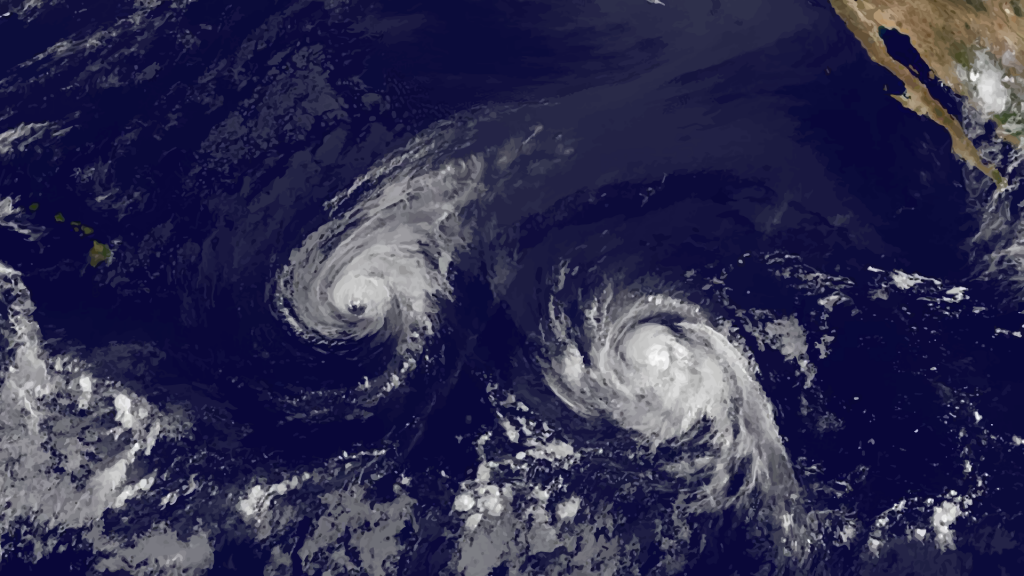
Get Ready for Hurricane Season
It’s June and that means we’ve just started hurricane season again in Hawaiʻi. During hurricane season, which runs from today through November 30, there is usually an increased chance for heavy rains and loss of power as a result of the severe weather – even when there isn’t a hurricane on the way.
Because there’s no way to know when your home may lose power, planning ahead is important to make sure your family’s needs can be met.
Hawaiian Electric’s Handbook for Emergency Preparedness is a great planning tool, available online for free in Cantonese, Ilocano, Korean, Vietnamese, and English and in print by request. They even have a Keiki Version in comic book style!
For families and caretakers of people with special needs such as cerebral palsy, we know there are a few more things to keep in mind, so United Cerebral Palsy Association of Hawaiʻi has put together this Power Outage Emergency Kit Checklist in hopes we can make planning a little easier.
What is a Power Outage Emergency Kit?
Scrambling for what you need when the power is out can be hazardous and frustrating.
Your Power Outage Emergency Kit is a box or bag of essential items, such as flashlights and batteries, that will help keep your family safe and anxiety levels to a minimum.
Where should I keep my Power Outage Emergency Kit?
Keep your Power Outage Emergency Kit in an easy-to-access place in your home. If your home has stairs, consider having one kit upstairs and one downstairs so no one needs to risk navigating the stairs in the dark.
Be sure your whole family knows where the Power Outage Emergency Kit is in your home. You may need to send a family member to get the kit out of storage while you tend to your family’s other needs.
What items should be in my Power Outage Emergency Kit?
We’ve broken up the list of essential items to have in your Power Outage Emergency Kit into six categories: Assistive Technology, Communication, Food, Light, Medication & Medical Equipment, and Power.
Assistive Technology
- Batteries, Chargers, and Charging Cords – You may not have the chance to charge any assistive devices in advance of the power going out, so it’s important to have enough batteries and juice in the portable chargers to support your family member’s assistive technology.This includes:
- Augmentative communication devices
- Computer equipment
- Electric wheelchairs
- Environmental controls
- Hearing aids
- Manual Versions of the Assistive Technology – In the event that the batteries and chargers you have are not enough, or the technology cannot be used for other reasons such as requiring internet access, plan to have a manual version of your family member’s assistive devices where possible.Examples of manual versions of the assistive technology are:
- Manual wheelchairs
- A book of printed sheets using the same or similar pictures from the augmentative communication device or environmental control system.
Communication
- Portable radio – You may not have access to the internet or cellular phone usage during a power outage, but a battery-powered or crank-powered portable radio can help you get up-to-date information that is important to helping you and your family stay safe.
Food
- Charcoal grill, butane stove, or other ways to cook
- Cooler and pre-frozen ice-packs – Having a cooler and pre-frozen ice-packs will help you limit how often you open the refrigerator or freezer. If you don’t have ice-packs, frozen meat or bags of frozen vegetables can be a good alternative.
- Food thermometer – This will help you decide if the food in the refrigerator or freezer is still safe to eat. If the food temperature is more than 40 degrees F, you should not eat it.
- Manual can or bottle opener
- Specialty feeding equipment – Be sure to have an extra supply of feeding tubes, gravity bags, and other specialty equipment if it is needed.
- Ways to process specialty foods – If your loved one has special dietary requirements, ensure you have ways to process these foods without power. For example, if you typically use a blender during food preparation, buy a handheld blender or a battery-operated hand blender for use during an emergency.
Light
- Flashlights or lanterns – These can be battery-powered, hand-cranked, or solar. Be sure to have at least one (1) light source for each family member.
- If your family member is scared of the dark or is sensitive to bright lights, many toddler flashlights come in fun shapes and colors, or have a softer light that is better for photosensitive eyes.
- Candles – Many people opt for flashlights or lanterns as a safer option, but it doesn’t hurt to have long-burn candles as a part of your kit. If used, be sure to keep them out of reach of children and do not leave the candles unattended.
- Matches or lighters
- Chemical light sticks – Also called glow sticks, these are often a long-lasting source of soft light.
- Because chemical light sticks are small and light, they can be attached to mobility assistive devices such as wheelchairs, without hindering its use.
Medication & Medical Equipment
- Cooler and pre-frozen ice-packs – Some medications require refrigeration. Having a cooler and pre-frozen ice-packs that are dedicated to refrigerated medication will help to prevent cross-contamination, and keep the medication in a more controlled environment.
- If you don’t have ice-packs, frozen meat or bags of frozen vegetables can be a good alternative.
- Extra specialty equipment – Be sure to have extra syringes, gravity bags, and other specialty items that may be needed to administer medication.
- Manual equipment –Many types of medication equipment, such as nebulizers, feeding pumps, IV pumps, and C-Paps come in a manual form that can be used in an emergency situation.
Power
- Batteries (and more batteries!) – Batteries for flashlights, lanterns, assistive devices and more!
- Charging cords
- Conversion cords – Used to charge your items with your car’s DC (direct current) charger.
- Generator – Not every family may need a generator, but if equipment such as feeding pumps, oxygen concentrators, and apnea monitors are critical to your family member, investing in a power generator may make sense.
- Portable chargers – Sometimes called power bricks, these can help keep your family’s mobile and tech devices charged.
We hope this list helps your family be prepared and stay safe during a power outage.
If you’re looking for other hurricane preparedness resources, don’t forget to check out:
- Hawaii Emergency Management Agency’s Prepare Your Family Resources
- Hawaii Emergency Management Agency’s Prepare Your Home Resources
- Hawaiian Electric Emergency Handbook
- Hurricane Checklist for Families with Special Needs Members
